#Analog Emulation
Explore tagged Tumblr posts
Text
KORG Collection 4 Download
The KORG Collection 4 is a remarkable software synthesizer suite that invites musicians, producers, and enthusiasts into a world of unparalleled sonic creativity. This digital treasure trove, available for download, is the latest iteration of KORG's legendary synthesizer emulation package, and it pushes the boundaries of virtual instrument technology.
With KORG Collection 4, users gain access to an extensive array of iconic synthesizers and keyboards, faithfully recreated down to the finest sonic details. From the classic MS-20 and the lush Polysix to the powerful ARP Odyssey and the timeless M1, this collection spans decades of KORG's innovation and history.
Each instrument in the collection is meticulously crafted, offering an authentic analog experience with modern convenience. The intuitive user interface makes tweaking sounds a breeze, while advanced features allow for deep sound design exploration.
Whether you're a vintage synth aficionado or a contemporary music producer, KORG Collection 4 is a versatile and inspiring tool, perfect for adding rich textures and evocative tones to your music. Download it today and embark on a sonic journey that spans generations of electronic music excellence.
#KORG Collection 4#Synthesizers#Music Production#Virtual Instruments#Digital Synths#Music Software#Sound Design#Retro Synths#Analog Emulation#Audio Production#MIDI Keyboards#Music Technology#Vintage Synthesizers#VST Plugins#Music Composition#Electronic Music#Music Gear.
1 note
·
View note
Text
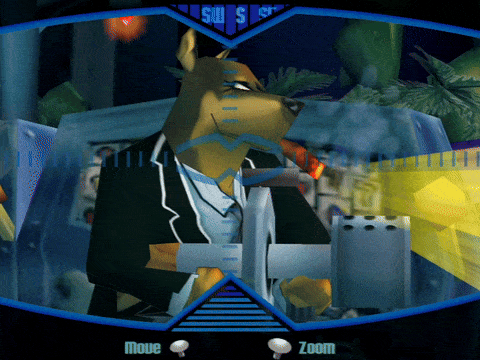

Sly Cooper and the Thievius Raccoonus - Muggshot guards
#im emulating it on my pc with rpcs3 its so smooth!#its being slightly irritating with my old ps3 controller though. it refuses to acknowledge my right analog stick beyond looking left and ri#ght#also those dobermans and their heat seeking bullets bro#sly cooper#sly cooper and the thievius raccooonus#video games#my gifs#gifs#gifset#soupy's#muggshot#animationgifs#ps2#playstation 2#nostalgia#2000s#videogamegifs#sly gifs
55 notes
·
View notes
Text
The game comes out tonight and I am both excited and terrified lol

Gotta do some more playtesting to make sure I didn't break anything, but I should be set to release on time. Thanks for all the support!! Releasing something you've spend 3 whole months of your life dedicated to is really scary 😅
Can't wait to get home from work to wrap this thing up, but also really scared that nobody's gonna play it, or there's gonna be weird issues I didn't see coming 😞
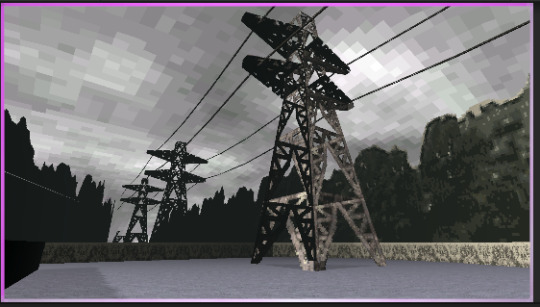

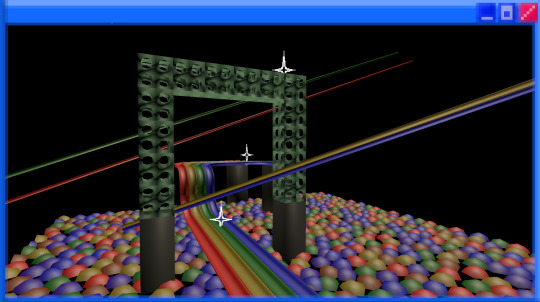
#gamedev#indie games#indiegamedev#weirdcore#dreamcore#ena joel g#liminal spaces#liminal#liminalcore#windows xp#indie game#analog video#lsd dream emulator#retrocomputing#retro aesthetic#ps1 aesthetic#ps1 graphics#ps1
152 notes
·
View notes
Text




started a new viddygame the other day
#katamari#me & my katamari#been wanting to play more katamari for a while but i've already played the hell out of the only 2 katamari games available on steam#(the 2 'rerolls')#i figured i could probably play some of the other games via emulation. finally looked into it & got my new 'psp' set up :-)#at first the controls sucked but then i added my dualshock4's analog sticks as alternate inputs for the directional and face buttons#and it just works! feels almost the same as playing katamari damacy or we love katamari#not perfect; still a tiny bit rough; but waaayyyy better than just using the dpad and face buttons#condolences to ppl who played this on an actual psp#it's unfortunate that the psp didn't have dual analog sticks. the playstation dual analog controller design is so good#wouldve been nice if that couldve been carried over to their portable console
9 notes
·
View notes
Text
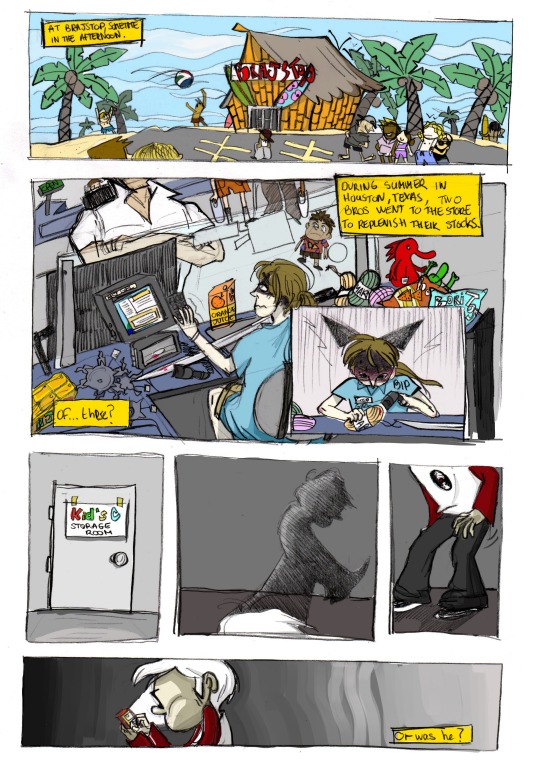
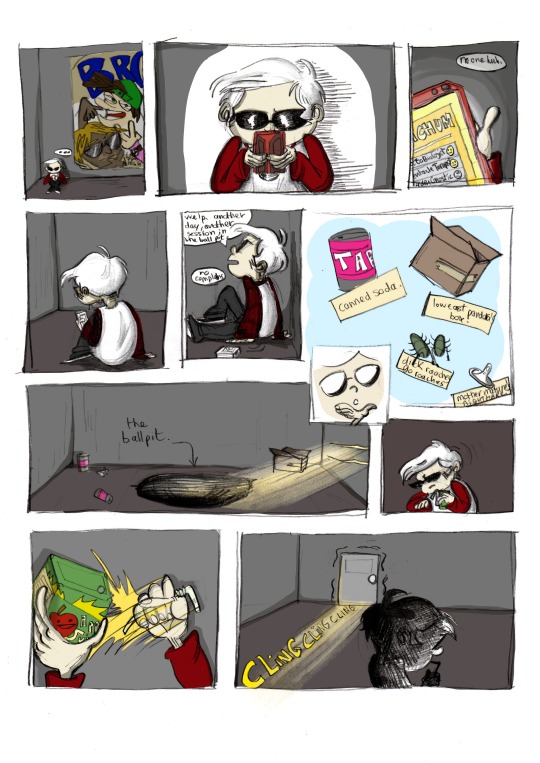
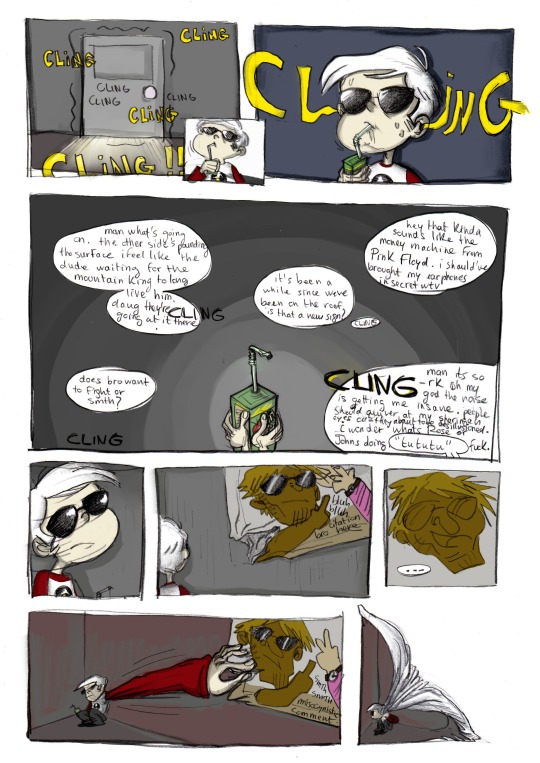

Dave Today part 1
(Based from Andrew Hussie's and Hanni Brosh's Quality Time comic on Paradox Space)
#homestuck#beta kids#dave strider#bro strider#dirk strider too#i guess#isolation#sorta coming of age comic#sometimes i forget Dave is barely 13#the AJ sorta emulates cigs btw#i thought it was a good analogy of coping#it's probably going to be a 20pages comic#so stay tuned i suppose#still trying to figure out how to shade properly#:P#btw i'm not an english speaker so if the Dave dialogue sounds a bit weird#i'm still trying to use his lingo somewhat adequatly lmao#YYDS is chinese slang for “GOAT” too#i liked it cuz there's DS in it#like Dave/Dirk Strider#Dave Today comic
102 notes
·
View notes
Note
do you have any analog horror recommendations? I really liked angel hare
the only other analog horror series im like actively following at the moment i think is welcome home, which im sort of assuming everybody online already knows about. i thought the children under the house was pretty good. its very much a classic ghost story type narrative told through the sorta analog horror lens which i think is cool.
nothing else strictly analog style rly comes to mind at the moment but allow me to take this moment to totally unprompted recommend my favorite underappreciated completed arg series daisy brown. in this house we stan daisy brown.
#ask#recs#i think my arg sensibilities tend to lean more towards the classic youtube vlog or fake videogame#or even the more recent like geocities/new web era emulating projects#what would u call smth like that? new web horror? post-analog?#theres smth there i think
28 notes
·
View notes
Text
I'm looking for Twitch art and YOU can help!!!
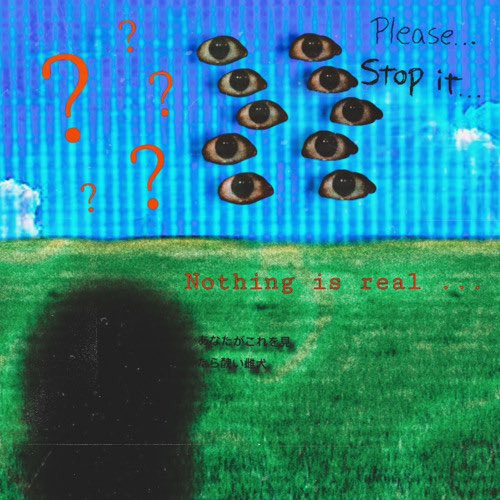

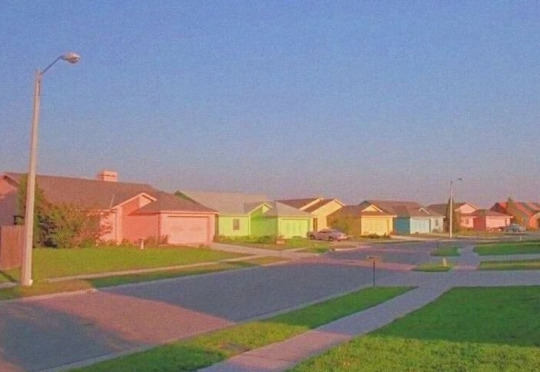

I qualify for Affiliate at last, but I've been wanting to overhaul my channel with mildly ambitious animated transitions, brb screens, intros, and an overlay like no other. If you know anyone who can animate or even just does dreamcore art (involving characters), let me know. If not, it would mean a lot of you could repost this to pass it along. Thank you!!!! ❤
#twitch streamer#small streamer#twitch#affiliate#dreamcore#weirdcore#lsd dream emulator#analog horror#looking for commissions#looking for artist
13 notes
·
View notes
Text
Thinking abt falling asleep again but end up deciding to check out this small series someone made, imitating early 2000 mmo games which is neat as a concept
#it’s very hard I think to catch my attention because I tend to dostance away from works that try emulating the analog horror format#I think it’s neat when people aim to show off their skills and test out their storytelling skills through that in the video format#it’s teeny toys exploration btw
3 notes
·
View notes
Text
So you know absolutely positively nothing about photography
Cellphone cameras are fucking great. I love them. I love the ability to take photos whenever and wherever at basically zero cost.
Point-and-shoot cameras have always been awesome and accessible devices.
This is not a post shit-talking "basic" cameras. This is a post for people who have only ever used basic cameras who want to know at least slightly more about photography.
Because, the thing is, a remarkable amount of photography is math. And if you don't know it's math, it looks like a mystery. And you may be standing there snapping a photo with your phone that looks pretty good, but your friend with a DSLR looked at the sky, twisted a dial, and took three steps to the left and they took a photo of the same subject that looks like it belongs on a magazine cover.
How did they do that?
Probably math.
If you've come into possession of a DSLR camera and are disappointed that the photos you're taking aren't looking like the photos you thought came from DSLRs, I'm here to tell you about the math you may not know about.
What is a photograph?
At its most basic, a photograph is the result of light on a sensor. Let's consider a pinhole camera for a moment. A pinhole camera is a lightproof box with a piece of photographic paper on one side and a tiny hole in the other.
When you create a photo with a pinhole camera, you're using pretty much all of the math you would in a big fancy camera, just in a cruder form they are:
The sensitivity of the paper, film, or camera sensor to light (this is your "ISO" if you're using a digital camera or film). Light sensitivity can be easily changed on a digital camera, but on chemical-treated paper or film the sensitivity is predetermined and cannot be changed. If you want to change the ISO on an analog camera, you need to change the medium that's being exposed.
An opening to let light in - your F-stop, or aperture. The F-stop of a photo is how wide open the lens is to let light onto your film or sensor. In a pinhole camera, you have something that is theoretically a very very large F-stop because you have a very, very tiny opening to let light through (F-stops run in reverse - the bigger the number, the smaller the opening).
Exposure - your exposure is the amount of time you leave your sensor open to the light. The majority of photos you see in the world have exposure times that are measured in tiny fractions of a second, sometimes in thousandths of a second. If you're using photo paper in your pinhole camera, you may have an exposure time of minutes rather than tiny portions of a second, but your photo exposure will still depend on how long you want to leave your "lens" open.
Focal length - your focal length is a description of the relationship of the distance between the light source and the light sensor. You can manipulate this in a pinhole camera by making the camera longer or shorter. A larger focal length means a narrower field of view - it zooms in on the subject.
A pinhole camera is the simplest camera that lets you, the photographer, control all of the elements of a photo. This is, functionally, fully manual photography.
So what's the difference between all that and a cellphone camera?
Point-and-shoot cameras like those on cellphones give the user more limited control over these settings. For instance, think of a disposable camera. On a disposable camera, the photographer has control over one setting - the ISO of the film, which they can select at purchase. They can't control how wide the lens opens or how long it stays open, and the only way they can compensate for lighting that is a poor match to the ISO is flash.
Cellphone cameras are very much like a standard point-and-shoot. By default, users point their cameras, then shoot a photo. Many cellphones have a "pro" mode that will allow the user to emulate different ISOs or f-stops, but the sensors in cellphone cameras aren't as good as the ones in camera-cameras, and the lenses are very limited as well. Some cellphone cameras and point-and-shoot digital cameras WILL allow users to set longer exposures, and many cellphone cameras have multiple lenses which does allow for some lens effects, but they don't give a huge amount of control to the user.
Okay so let's say I've got my new shiny camera, what do I need to know?
For best results, you want your ISO to match the light you're shooting in. Low ISO is for bright light, high ISO is for low light. If you wanted to take snapshots of your family outdoors at disneyland in the summer, you'd buy 100 ISO film. When I used to shoot football games at night in oddly lit stadiums, I'd use 1600 ISO film. If you have a DSLR camera, there's a setting somewhere in there that tells you how to set the ISO. If you are shooting in relatively low light and the photos are turning out darker than you'd like *but* things are moving too quickly to use a longer exposure, you can bump up your ISO for brighter, sharper images but they will be more noisy and grainy than ones shot at a lower ISO. If you want clean, smooth, crisp images, your goal should be to shoot with the lowest ISO possible.
The Aperture of your camera lens determines your F-Stop. This acts like the pupils of your eyes. When it's really really bright out, your pupils shrink down to let in less light. When it's darker out, your pupils get bigger to let in more light. If you are shooting in low light, you want a low F-Stop, which means that your camera's lens is open really wide. If you are shooting in a bright environment, you want a higher F-Stop, which will mean the opening is very small. Since your F-stop interacts with the focal length of your lens, you will find that zooming in with the lens often makes images darker. To shoot clear images from far away, you need to be very conscious of your F-stop, your ISO, and ambient lighting conditions.
Exposure describes the length of time you set the camera to leave the aperture open. In many DSLRs this can span from 1/3200th of a second to infinitely long (the "bulb" setting means "aperture is open until you close it.") If you want sharp images of frozen motion, you want the fastest speed that you can get. Sports photography and photography of things like insects or milk crowns often use extremely short exposures to get sharp images. If you want blurry images you want slower speeds. If you want to take a photo in a low-light environment and capture motion within that environment - for instance, taking photos of cars on a freeway at night - you want slower speeds (if you want to do this in a brighter environment, like taking photos of a stream in the daytime, you want slower speeds and a specific kind of lens filter called a neutral density filter). When exposures are set to be longer than about 1/60th of a second, images with motion start to look blurry.
Focal Length determines the field of view of your subject. If you have a lens with variable focal lengths, this is called a zoom lens. A longer focal length zooms you in and a shorter focal length zooms you out. Lenses with fixed focal lengths are called prime lenses, and can't zoom in or out.
Depth of Field - your depth of field is a combination of the interaction of your focal length, your distance from your subject, and your F-stop. The depth of field describes the relative amount of space in a photograph that is in focus. A long depth of field means that much of the image plane is in focus. A short depth of field means that a narrow portion of the image plane is in focus. A low F-stop produces a narrow depth of field. A long focal length produces a narrow depth of field.
You can think of your camera as a tool that measures time and space. Your ISO and Exposures are measurements of time (how quickly the sensor senses the light, how long the sensor is exposed to the light), the F-Stop and the focal length are measurements of space (how wide the aperture of the camera is, how far the lens is from the sensor).
The pre-set modes on your camera, the ones on the dial that show a person running, flower, or a cloud, or a lady with a hat - these are generic settings that combine an ISO, exposure time, and f-stop that are likely to work well for outdoor action shots, landscape photography, cloudy light, and portraits. When you're using those pre-set modes, you control the focal length and not much else.
When you understand that the running person/action mode means low-ish ISO combined with high shutter speeds, you can start just setting your own ISO and shutter speed when you're shooting sports. When you know that portrait mode sets you up for low-ish f-stops, relatively quick shutter speeds, and mid-range ISOs, you can just start setting those things on your own so you can have more control.
"What about light metering?"
Since your camera is a machine that records light, light metering is pretty important. The light meter of your camera will tell you if your settings are "correct" for the amount of that the light sensor senses. In most modern cameras there is a light metering display on the bottom edge of the viewfinder that goes from negative to positive; if the meter shows that you are in the negative it means that your photo will be under-exposed (too little light will get to the sensor and the image will appear dark), if the meter shows that you are in the positive it means that your photo will be over-exposed (too much light will get to the sensor and the image will appear too bright - "blown out"). The way to correct for under or over exposure is to change the length of the exposure, making it longer for underexposed images and shorter for overexposed images.
What the light meter is doing is thinking about all of your settings and the lighting for you. It looks at the ISO, focal length, f-stop, light hitting the sensor, and planned exposure time and tells you what that combination of settings is likely to produce - something too bright, or something too dark.
When you are more experienced with photography, you get good at juggling these things on the fly and messing around with them more, which is how you can do the magic of looking at the sky, twisting a dial, taking three steps to the left, and knocking it out of the park with a picture.
It only looks like magic because you're doing a ton of math under the hood that is extremely non-obvious to people who are new to photography.
Anyway, here is a good guide to depth of field and what goes into it.
Here is a basic photography textbook that explains the principles that I've gone over here in a lot more detail with a lot better explanations. It's a film photography textbook, but one of the cool things about photography is that a lot of stuff from the analog era is still relevant in the digital area, and the basics haven't changed.
However all of that is about the *technical* aspects of photography. Photography isn't just a record of exposure time and focal length, so here's a basic photo composition textbook that talks about the artistic principles of photography.
2K notes
·
View notes
Text
in my recent dive into random ps2 games, i discovered a game called Yanya Caballista: City Skater. a game which is difficult to emulate entirely because if came with a dualshock analog stick fingerboard attachment that required you to hold the controller sideways and use your thumbs as the skaters legs. it has a visual aesthetic reminiscent of jet set radio and some killer character designs. i love shit like this sooo much

713 notes
·
View notes
Text

low key been making a more deliberate effort to try and emulate how I ink with analog art supplies into my digital art and it's. well. going badly because I keep thinking 'ah you'll never be my favorite inking brush,' to every digital brush I use BUT it's been fun seeing other things start to emerge along the way!
I think it might also be fun to post one of these sports studies once a week (saturdays) (not necessarily at night lol) especially since it's summer and summer is baseball ☀️☀️☀️⚾⚾⚾
#i also FINALLY after talking about it for years. have a 'summer' comic thumbnailed out. now the hurdle will be finding the time to#actually draw any of it. barkada. kabayan. the fucking economy is in shambles and my bank account is not happy about it#especially because i live in a place that's surrounded by fucking car dealerships of all things and no one is hiringgggg aughggbgbghrhg#ANYWAY. baseball. my beloved baseball. minor league teams i love you#summer weather in the evening and you can hear the train in the distance ive missed you so much#saturday sports tag#original tag
96 notes
·
View notes
Note
what are sunnis and salafists? sorry that this out of nowhere im a white anon so i dont know alot and you can ignore this if you want
Sunnis are adherents of Ahlul Sunnah wal Jumu'ah (the people of the Sunnah) or the Sunni branch of Islam. It constitutes the majority of followers of Islam, with Shi'as being the second largest group of Muslims. The name is derived from the term Sunnah, which means Prophetic traditions and practices.
Historically, Sunni Islam did not originate at the onset of Islam and following the historical disagreement regarding the successorship of Muhammed (pbuh&hf), but is rather the culmination and consensus of centuries of legal and scholarly opinions, debate and theological studies, thus is it is a misconception to assume that Sunnism was brought about during the political schism in the early years of Islam, whereas Shi'ism were a partisan group before forming its own theology and jurisprudence a century later. Sunni Islam derives its laws and jurisprudence through the Qur'an, Sunnah, consensus and analogical reasoning. Sunni Islam is represented by four school of thoughts: the Hanbali school, the Hanafi school, the Maliki school and the Shafi'i school. Each school of though represents a particular geographic location, and lay people following Sunnism may follow the scholarly opinion corresponding to their geographic origin and location. Most Sunnis follow the Maturidi and Ashari rationalist schools of theology and rely on scriptural sources to derive their understanding regarding God's nature and the material and metaphysical reality.
Salafism is a reformist/revivalist movement within Sunni Islam that holds that the purest form of Islam can only be derived through the opinions and practices of the honorable ancestors (Salaf al-Saleh). They hold that the best generation of Muslims were the Sahabas (companions), the Tab'iun (the second generation) and the Taba al-tab'iun (The third generation), according to a prophetic tradition, viewing later interpretations of Islam as innovations or deviation from the Qur'an and the Sunnah. They believe that only through the Salafs can absolute monotheism be understood and that anyone who rejects them or derive different opinions are deviants or heretics, such as the Shi'as (and some Sunnis), who venerate saints. They reject the concept of Taqlid (emulating), that is, following the four schools of thought, holding that ijtihad (independent reasoning) takes precedence over Taqlid through the study of the Qur'an, the Sunnah and consensus of the Salaf al Saleheen. Salafists tend to reject the rationalist schools of mainstream Sunni theology and adheres to a literalist and traditionalist (Athari) interpretation of Islamic theology as understood from classical scholars such as Ibn Taymiyyah, Ibn Kathir and Ibn Qayyim. They may also derive their understanding of religion through the legal opinions of other modern Salafist scholars. There are several Salafist movements, such as Madkhalism (the quietist school), Wahhabism, Salafi-Jihadism, Ahlul al-Hadith and etc. Salafists are known for their puritanical view on Islamic monotheism and literalist interpretation of scripture, hence their intolerance toward other co-religionists that do not conform to their religious interpretations. They most notably hate Shi'a Muslims.
116 notes
·
View notes
Text

recently i picked up an 8bitdo sn30 (their wireless snes-style controller with dual analog sticks/four shoulder buttons/etc.) on a whim to maybe play some emulated games with, since my muscle memory with the xbox button layout always trips me up when i'm using it to play nintendo games, and i'm amazed by how much i'm loving this thing. i thought i might miss the grips modern controllers always have, but it really is comfortable. there's just something great about having a small, lightweight controller that i can connect to my computer just by holding start, no usb dongle needed. now i wanna get their sega-style controller too for emulating sega games
62 notes
·
View notes
Note
Hi! I just stumbled onto your blog and saw that you do analogies! And I’ve just been dying to talk about this lol,
I’ve always wanted to talk about Dazai and Akutagawa, and how Dazai ignoring him and never actually apologizing to him is actually helping him in some sick way.
think about it this way, Dazai knows that Akutagawa wants his approval, he needs his approval, even if Dazai abused him.
Dazai knows that if he were to give Akutagawa the attention and approval he wants Akutagawa is going to continue to see Dazai as his savior, however if Dazai continues to ignore him and purposely puts the tiger guy(I can’t spell his name 💔) in front of him multiple times akutagawa is going to eventually have character development and growth and eventually he’s going to grow out of Dazai, In a way Dazai is helping him, because of the strong attachment Akutagawa has to Dazai is a weakness, it’s a weakness that has no place in the port mafia. im sure there’s more to back up this claim but still.
or I’m just talking out of my ass and Dazai just uses him for his selfish purposes(most likely)
thank you for listening to my Ted talk ���
Hi anon! Thank you for inviting me to your Ted talk!
The Dazai and Akutagawa dynamic is one of the more complicated dynamics in BSD, and certainly one of the hardest to discuss. There are a lot of facets that I couldn't possibly cover all in one post, so I'll just address the question you brought up: Is Dazai, in his own twisted way, trying to help Akutagawa?
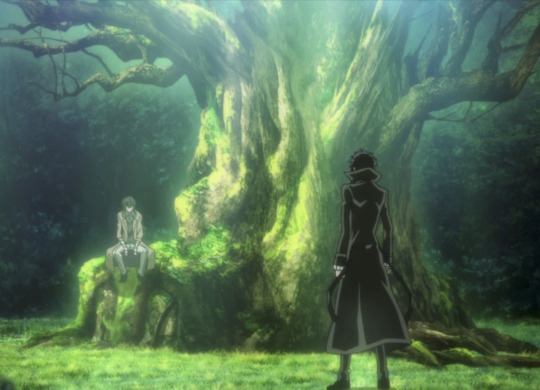
Well... I think, sort of, yes. But calling it "help" is generous.
BSD has a running theme of abuse narratives that sit on this uncomfortable fence - neither particularly apologetic nor condemning of them, but simply showing the characters' complicated reactions as they are. Personally, it's something I appreciate as a reader. Atsushi's struggle against the ghost of the orphanage director is one of my favourite parts of the story. The director is dead, but Atsushi spent much of the early story acting specifically to prove him wrong - as if to measure his life's worth against the words he'd been assaulted with. He knows the orphanage director was needlessly cruel and does not forgive him, but he also learns the reason why he did it. He hates him, but he's still allowed to have messy feelings of grief for the man who was the closest thing he ever had to a caregiver.
These narratives crop up again and again. The Orphanage Director and Atsushi. Akutagawa and Kyouka. Kouyou and Kyouka. In all of these, the through line is the initial intent: each one of the people who enacted these cruelties intended to help. However, they're limited and blinded by the cruelties they themselves underwent. As such, they do what they think is best without any regard for whether that is actually what the other person needs. The Orphanage Director thought he was toughening Atsushi up to prepare for the outside world. Kouyou thought she could shield Kyouka in the shadows since her experience was that having hope and losing it is worse than having none at all.
Akutagawa tried to help Kyouka too, in his own way, by emulating what he thought Dazai wanted from him - he tried to forcibly fashion her into a weapon, into someone strong, because that's the only way he thought her life could have meaning.
But the Dazai and Akutagawa dynamic, though it bears similarities to many of these, is much more complex. For one, Akutagawa misinterpreted what Dazai wanted from him. He thought if he fashioned himself into a strong enough weapon, he could prove his worth and be acknowledged. But that's not the case. Here's a few passages from Dark Era:
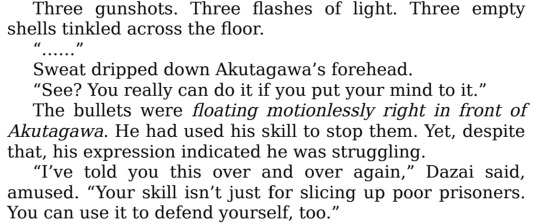
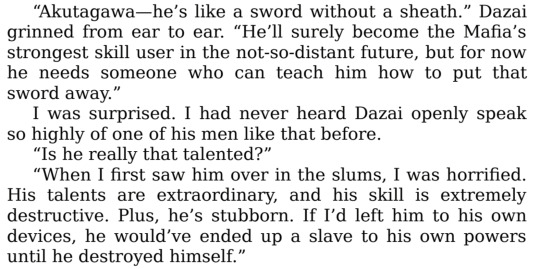
Dazai wasn't trying to make a sharper blade, he was trying to make him more well-rounded - to learn to shield as well as attack. All this for the purpose of making a new Double Black to face off against Fyodor's plans. Note that it is Atsushi with the claws - the weapon - and Akutagawa as the reinforcer and shield in their team ups.
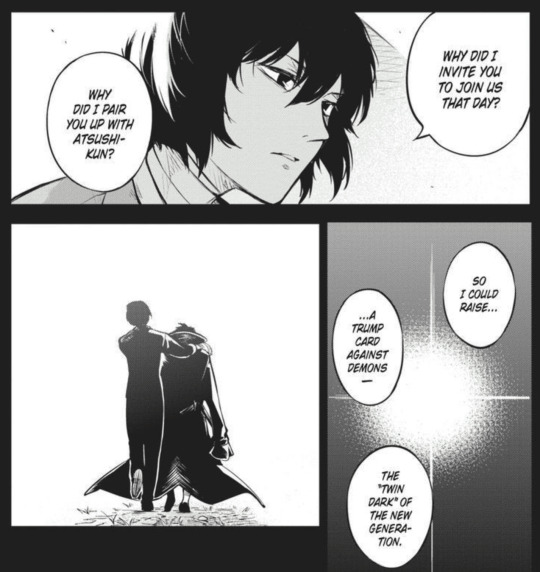
So, is that it? He just wanted a powerful duo?
There's a little more to it. In the Heartless Cur, which describes their first meeting, we have this pivotal moment:
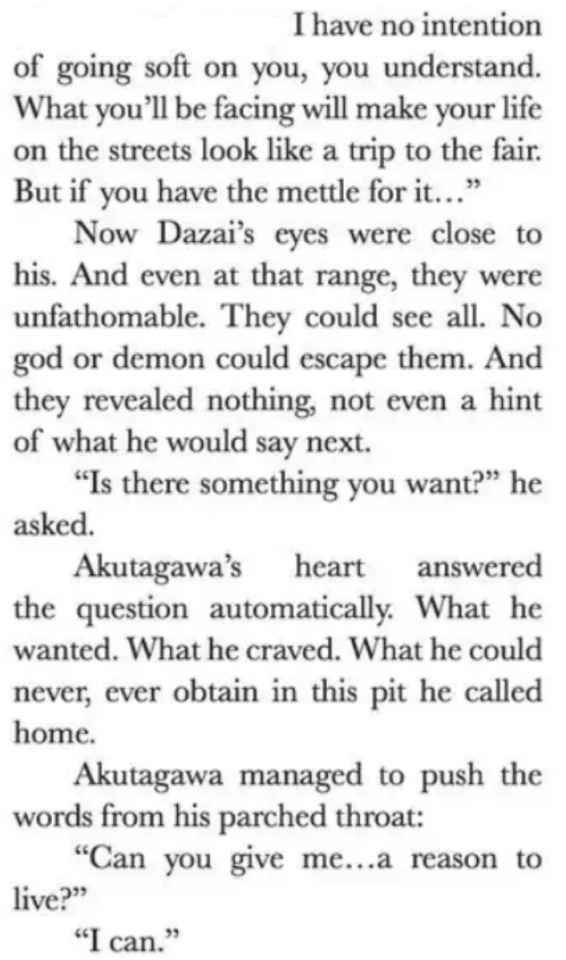
It's the question which runs through the entire series, and it's the question through which our characters all struggle with. What reason is there to live in a cruel world? How best to navigate it?
Dazai at this point doesn't have the faintest clue. It's blind leading the blind. Dazai says he can give him a reason while being unable to deliver in any reasonable way, but I don't think he was necessarily lying - not out of goodwill or anything like that, but because Dazai has always been invested in observing people's convictions to live and the reasons they come to. He's invested in the human struggle.
But at this point in his life, his attempts to warp and control Akutagawa are met with failure, because he does not impart any good reason to Akutagawa why he should value anything. Even though he recognized that a more patient approach like one Odasaku would take might work, he dismisses it for himself because "righteousness doesn't take" to him. Again, we see this ongoing commonality of people doing what they think is best for another while actually acting on their own biased viewpoints, as opposed to really seeing what is best for the person in their charge.
So, while the idea that Dazai wanted to help Akutagawa by putting him in contact with Atsushi is nice... I believe it is and has always been more strategic than anything. Moreover, Dazai has this weird moment of pettiness where he does the exact same thing to Akutagawa by comparing him with Odasaku.


It's not really "help" so much as it is "hey why don't you go interact with this person I know who values life, maybe you'll learn something"... instead of, you know, actually helping him find things to value. And Akutagawa's later interactions with Atsushi are a continuation of his initial plan to create a new powerful partnership - which is a strategic choice first and foremost. But it can't be overlooked that the only way sskk would work well together is if they come to understand each other - and that sort of necessarily involves them both coming to some kind of reason.
So, in carrying on with similar patterns from other dynamics, and in his intent for the duo, I do honestly think that Dazai wants Akutagawa to find his reason. As always, Dazai has multiple explanations for his actions, and honestly, I do think one such explanation is that Atsushi and Akutagawa would be able to help each other. I don't know that I would call this Dazai "helping", per se, but it is a form of investment.

#i don't think dazai's methods offer anything in the way of help to akutagawa... his need for approval isn't a weakness for the mafia#because it makes him one of the first to volunteer for missions and mori knows how to work with him#also a part of me is very reticent to ascribe sskk's development to some sense of dazai's goodwill.#there's a lot of complicated facets and i couldn't get into most of them. but i'll just say i... sigh... have a lot of mixed feelings#dazai definitely intended them to work together though and he definitely is invested in them. he wants them to succeed. that much is canon#storyrambles#please read with the understanding that i am analyzing what is actually in the story and not my personal feelings on the matter#i also have not gone back through their whole dynamic. if i've missed something please feel free to add#bsd#bsd meta#bsd akutagawa#bsd dazai#call me ace detective the way i am ace. and also a detective
35 notes
·
View notes
Text
Jack Stauber gets his signature degraded tape recording sounds and visuals using analog gear and then digitizing the results, which explains why the VHS look is a million times better than the obviously phony VHS filter that comes prepackaged with Adobe that shows up all over youtube nowadays, almost a weird rewriting of history as many younger people’s internal visualization of a VHS recording will be based off a cheap emulation rather than the actual thing.
I realize this is a silly and hyper specific thing to care about, but it’s something I only recently learned that meant a lot to me and seemingly helped me understand part of what gives Jack’s work the aura of authenticity associated with the less polished look. It wasn’t manufactured, it was created that way, and little details like that stick out as important to me. You might not notice it immediately, but if you were able to remove the degradation from the tapes and if you had recorded these same songs in a professional studios with producers or recorded those same animations in 4k quality, much of the life and warmth and feeling of inherent longing for a time you weren’t even a part of would be stripped away, and those emotions getting evoked is a massive part of why Jack’s material works for me.
In a larger context, it’s interesting to me how what are considered defects of any given medium at the time, are in hindsight the most charming and valuable thing about it. The needle drop, the hiss of a record, rolling the tape back before returning it, scratched dvds with wildly interactive menus, there is a magic to the tech we create that gets lost in translation, until suddenly it doesn’t. Suddenly you’re listening to a Mac Demarco record for the first time and noticing a strange quality to the sound, then you do a bit of research and discover it’s all in the analog gear he used instead of a digital audio workspace. All of this is not intended to be nostalgia porn, I’m not saying any medium is better than another, and to some degree it’s difficult not to be cynical about an aura of authenticity when it’s deliberately emulated rather than organically lived in, but at the end of the day what matters the most is the effect on the viewer or listener or reader, and that tangible emotional effect is what I’m talking about.
83 notes
·
View notes
Text
3D printed frame, adjustable endstops and tension etc. Now using Pi Pico with Circuitpython, emulates mouse and keyboard. Full analog movement, joystick module needs better mounting, but maybe next revision has something new!
#horse games#horse gaming#homebrew gaming setup#horse sim#sso#star stable#star stable online#ssoblr#sta sta#starstable#starshine legacy#Welcome to the horse game hell madness
139 notes
·
View notes